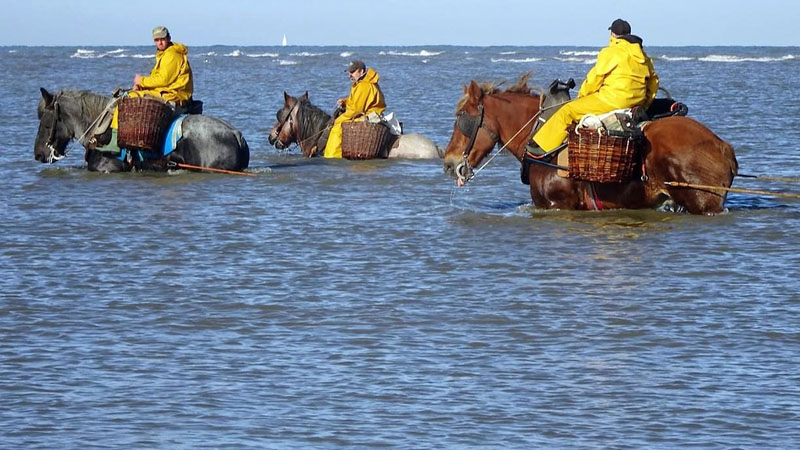Exclusive content

In the Belgian town of Oostduinkerke, a fading tradition comes to life as a small number of dedicated families keep alive the age-old practice of shrimp fishing on horseback. Once a common sight along the Belgian coast and European waterways, this unique fishing method is now a rare spectacle, cherished for its historical significance.
Horses Treading Through Shallow Waters
In this time-honored practice, brave fishermen, mounted on sturdy horses, wade into the chilly surf in pursuit of shrimp. The horses venture out into the sea until the water reaches their chest. Behind them, a chain and net stretch out into the waves. As the horse slowly walks, the chain drags over the sandy seabed, creating vibrations that startle and entice the shrimp to jump into the waiting net.
The process is not only a remarkable display of skill but also a rhythmic and harmonious dance between man and beast. Approximately every half hour, the fishing team returns to the shore. This break allows the horse to rest, while the fishermen sort through their catch using sieves. It’s a labor-intensive and demanding task, requiring both precision and patience.
A Tradition at Risk
Regrettably, this traditional method of shrimp fishing is no longer economically viable in the modern world. As a result, you can now only witness this captivating spectacle in Oostduinkerke, where the practice has been preserved with the help of financial support from the tourism board. The tradition’s significance was further recognized when it was added to UNESCO’s prestigious list of intangible heritage.
While shrimp fishing on horseback in Oostduinkerke is a captivating performance, it’s not just for show. Visitors to this charming town can savor the unique flavor of the North Sea by purchasing the day’s catch, ensuring that this cherished tradition lives on, not only in the hearts of locals but also in the taste buds of those who experience it.